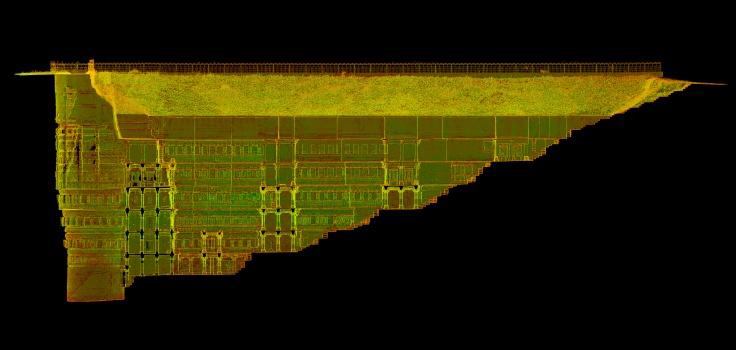A lack of ready access to water has long sparked ingenuity among civil engineers. (Consider the miles of aqueducts that delivered water throughout the Roman Empire or the hydraulic pumps that fed the elevated Alhambra citadel in Spain.) One solution, the stepwell, dates to the 3rd century B.C. and now risks being swallowed up by time.
Unique to the Indian subcontinent, where the climate oscillates from arid to monsoon, stepwells descend deep into the earth to a cistern at the water table. Ledges protrude at each story, giving patrons perches from which to meet the fluctuating water levels. Commissioned by wealthy patrons of the Hindu and Muslim communities living in the area, the sites were open to most members of the community and visitors regardless of faith, as well as to animals. “They were the most democratic structures in India,” says Victoria Lautman, a Chicago-based journalist who has spent months in India researching and writing extensively on the topic.
Stairs and arcades surround the wells. Ornate details tell of their dual use as temples, memorials, and travel shelters, while their inverted pyramid form acts as a buttress. Thought to tally in the thousands at their peak of use in the 18th century, they have since been pushed out of use and into disrepair by new technology and ebbing water tables. Only a few hundred remain, and even fewer are navigable.
In June, one important stepwell, Rani-ki-Vav in India’s Gujarat state, was named a UNESCO World Heritage Site after two weeks of extensive modeling and digitization in 2011 through a heritage project of the Scottish government, digital preservation nonprofit CyArk, and other partners. The seven-story, 11th-century well is noted for its size—64 meters wide, 20 meters long, and 27 meters deep—and its well-preserved features (it partially collapsed and filled with silt early on), Lautman says.
A spot on UNESCO’s list and online access to the site provided by CyArk could help Rani-ki-Vav and other stepwells find new life. Additionally, in Delhi, some stepwells are being revived
